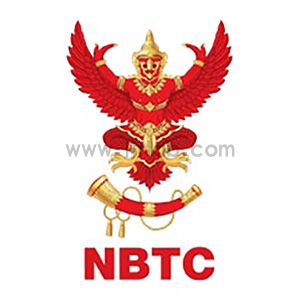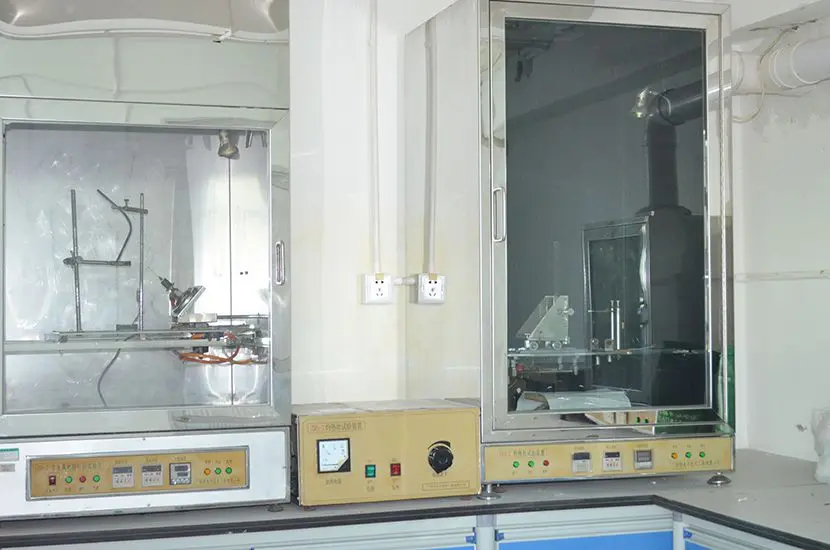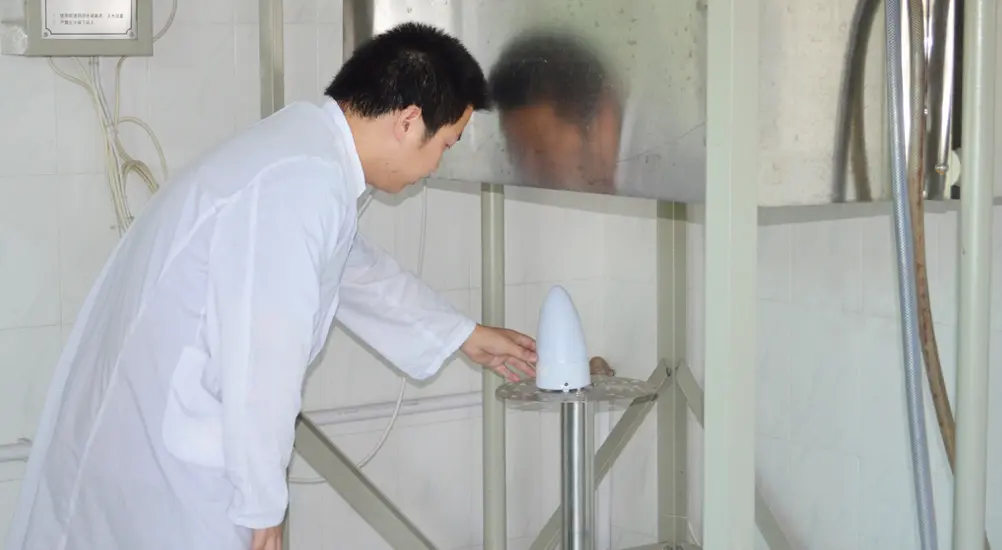
Introduction to Thailand NBTC Certification
The Thailand NBTC stands for the "National Broadcasting and Telecommunications Commission." It is a typical government regulatory body with administrative enforcement powers and is the main authority for telecommunications products and networks. Since July 1, 2008, the existing mandatory regulations for mobile communication products have been expanded to cover wireless-related products. Generally, mobile phones and other wireless products exported to Thailand must obtain nbtc certification before they can be sold in the local market.

Basic Information on Thailand NBTC Certification
The National Broadcasting and Telecommunications Commission (NBTC) is the regulatory body for wireless and telecommunications regulations in Thailand. All wireless and telecommunications products must obtain NBTC certification before entering the market.
Key Points:
- Mandatory certification
- Local representative required
- No samples needed
- No local testing required
Product Categories under Thailand NBTC Certification
Telecommunication equipment sold in Thailand regulated by NTC falls into three categories:
Class A: Registration
- Products must be tested at an NTC-designated laboratory, and after providing the required data, a registration number and certification certificate are obtained.
Class B: Approval Certification
- Similar to Class A, but foreign reports such as FCC, CE, CB, etc., can be used for certification applications. Registration number and certification certificate are required.
SDoC: Supplier’s Declaration of Conformity
- This is a voluntary mode of product certification, requiring a local representative in Thailand to fill out the SDoC form and submit it along with technical documents to NTC for record-keeping.
NBTC Certification Label
There are no specific label requirements for NBTC. However, a new draft for product certification labels introduces NBTC's electronic labeling method (E-labeling). All labels must be purchased from NBTC at a cost of one Thai baht per label.
Applicable Products for NBTC Certification
NBTC certification covers specific products including RF/telecom, mobile, telephone, terminal equipment, or telecommunications-related products.
Application Process
1. Provide product manual and user guide.
2. Fill out the testing application form and provide product information.
3. Confirm testing standards and arrange for initial testing.
4. Product adjustments and arrange for testing.
5. Completion of testing and draft report preparation.
6. Customer confirmation of report information and issuance of stamped report.
7. Use CE report + Thai deviation to apply for NBTC certification.
Required Application Materials
1. 1-2 product samples
2. Product manuals and user guides
3. Adapter safety reports (LVD report) EN60065, EN60950, or EN62368
4. List of key components and their certificates (UL/ETL), including manufacturer model numbers
5. Product labels and packaging images
6. Operating environment temperature range (tc℃, ta℃)
Information Required for NBTC Certification
- Thai application form (arranged by us)
- Product technical documents (catalog/manual/photos/technical specifications)
- Test reports (RF, EMF/SAR, safety test reports)
- Other relevant documents
Test Report Information
- Samples
- Antenna specifications or gain chart
- Fixed frequency software
- Bill of Materials
- Block Diagram
- Circuit Diagram
- Product Description and Concept of Operation
- Label Artwork
- Marketing or Design Packaging
- PCB Layout
- Copy of Declaration of Conformity
- Sub-Assemblies (required by Japan Telec)
- User Manual
- Declaration on Model Difference
- ISO 9001 Quality System Certification (required by Japan Telec and domestic SRRC model approval)
NBTC Product Categories
Telecommunication equipment sold in Thailand affected by NTC or NBTC regulations is divided into three categories:
- Class A: Registration (products must be tested at NBTC-designated laboratories and provide required data to obtain a registration number and certification certificate)
- Class B: Approval Certification (similar to Class A, but foreign reports like FCC, CE, CB can be used for certification applications, requiring a registration number and certification certificate)
- SDoC: Supplier’s Declaration of Conformity (voluntary certification mode, requiring a local representative to fill out the SDoC form and submit technical documents to NBTC for record-keeping)
Who Needs to Apply for NBTC Certification?
- Manufacturers, importers, traders, retailers, or advertisers (local/overseas)
- Applicants must provide a local representative in Thailand
- Applications must be submitted by the "local representative," including the "supplier code" and submitted in Thai only
Current Technical Standards List in Thailand
- NTC TS 001-2548: Radio communication equipment operating in the VHF/UHF band for land mobile services (Class B)
- NTC TS 002-2548: General public radio communication equipment operating in the 78 MHz or 245 MHz bands (Class B)
- NTC TS 003-2548: Radio communication equipment operating in the VHF band for aviation mobile services (Class B)
- NTC TS 004-2548: User equipment operating in cellular land mobile services using GSM technology (Class B)
- NTC TS 005-2548: Radio communication equipment in Global Mobile Personal Communications by Satellite (GMPCS) systems (Class A)
- NTC TS 006-2548: Wireless microphone (Class A)
- NTC TS 007-2548: Radio control operating at 72 MHz (Class B)
- NTC TS 1001-2553: Radio communication equipment for voice communication in the VHF/UHF band for land mobile services BE 2553 (2010)
- NTC TS 1002-2553: Citizens band (CB) radio communication equipment operating in the 78 MHz or 245 MHz bands
- NTC TS 1003-2553: Radio communication equipment for aviation mobile services in the VHF band
- NTC TS 1004-2553: User equipment operating in cellular land mobile services using GSM technology
- NTC TS 1008-2549: Base station/repeater operating in cellular land mobile services using GSM technology (Class B)
- NTC TS 1009-2549: Digital trunked radio system in land mobile services (Class B)
- NTC TS 1010-2550: Radio Frequency Identification (RFID) equipment (Class A/SDoC)
- NTC TS 1011-2557: Automotive radar in the 24.05-24.25, 24.25-26.65, and 76-77 GHz bands (Class A)
- NTC TS 1012-2551: Broadband wireless access (wireless LAN) radio communication equipment (SDOC)
- NTC TS 1013-2549: Broadband wireless access (metropolitan area network) radio communication equipment (Class B)
- NTC TS 1014-2549: Base station/repeater operating in cellular land mobile services using IMT-2000 CDMA direct spread (WCDMA) technology (Class B)
- NTC TS 1015-2549: User equipment operating in cellular land mobile services using IMT-2000 CDMA direct spread (WCDMA) technology (Class B)
- NTC TS 1016-2549: Base station/repeater operating in cellular land mobile services using IMT-2000 CDMA multi-carrier (cdma2000) technology (Class B)
- NTC TS 1017-2549: User equipment operating in cellular land mobile services using IMT-2000 CDMA multi-carrier (cdma2000) technology (Class B)
- NTC TS 1018-2550: Radio communication equipment operating in amateur services (Class B)
- NTC TS 1019-2551: Earth station antennas in satellite fixed services using geostationary orbit (Class A)
- NTC TS 1020-2550: Shipboard 27 MHz CB radio communication equipment (Class B)
- NTC TS 1021-2550: Radio communication equipment operating in marine mobile services in the VHF band (Class B)
- NTC TS 1022-2552: Marine mobile services in the MH/HF band (Class B)
- NTC TS 1023-2552: Radio communication equipment for data communication in VHF air-to-ground digital link (VDL) systems (Class B)
- NTC TS 1024-2552: Radio communication equipment for voice and/or data communication in VHF/UHF band for land mobile services (Class B)
- NTC TS 1025-2557: Short-range devices in WLAN or WPAN (57-66 GHz) (Class A)
- NTC TS 1026-2557: Base stations and repeaters using E-UTRA technology IMT (Class B)
- NTC TS 1027-2557: Customer devices IMT using E-UTRA technology (Class B)
- NTC TS 1028-2558: Technical standards for the base unit of paging systems
- NTC TS 1029-2558: Technical standards for the pocket unit of paging systems
- NTC TS 1030-2559: (MF/HF land mobile)
- NTC TS 2001-2550: Optical communication systems (SDOC)
- NTC TS 3001-2550: EMC for telecommunication terminal equipment (SDOC)
- NTC TS 4001-2550: Electrical safety for telecommunication terminal equipment (SDOC)
- NTC TS 5001-2550: Radio communication equipment (RF radiation in the 9 kHz - 300 GHz range) based on ICNIRP guidelines (depending on equipment type)
- NTC TS 6101-2551: Time Division Multiplexers (TDM) interconnection
- NTC TS 6201-2550: Next Generation Network (NGN) interconnection technical standards
NBTC TS 1035-2562
On November 12, 2019, the NBTC issued new regulations NBTC TS 1035-2562, updating the standards for products with 2.4G and 5GHz wireless bands. The new standards replace the old ones (NTC TS 1012-2551 RLAN) and are effective immediately, without affecting products that already have NBTC certification.
Summary of New Standards:
- For 2.4GHz and 5GHz SRD bands:
- 2.4GHz: EN 300 328 V2.1.1 or current, fcc part 15.247
- 5.150-5.350 GHz and 5.470-5.725 GHz: EN 301 893 V2.1.1 or current, FCC Part 15.407
- 5.725-5.850 GHz: EN 302 502 V2.1.1 or current, FCC Part 15.247 or 407
Frequency (GHz) | e.i.r.p. output power (Watt) | Usage |
2.400-2.500 | 0.1 | Indoor |
5.150-5.350 | 0.2 | Indoor |
5.470-5.725 | 1 | Indoor and outdoor |
5.725-5.850 | 1 | Indoor and outdoor |
Power Limits (EIRP):
- Product safety reports can accept IEC 62368-1.
- NBTC also includes requirements for 4G LTE B46 band usage in this new regulation.
SAR/EMF Requirements for WiFi Products by NBTC
Effective from July 18, 2018, WiFi products must provide EMF/sar test reports:
- Products with a usage distance of less than 20 cm from the body (e.g., laptops, mobile phones, tablets) must provide SAR test reports.
- Products with a usage distance greater than 20 cm (e.g., gateways) must provide EMF test reports.
- Products with an EIRP not exceeding 100 mW (e.g., 2.4G WiFi products) do not need to provide SAR/EMF test reports.
NBTC LTE Band Certification
On September 16, 2019, the NBTC issued the latest announcement, opening LTE Band 28 certification for Wireless Wide Area Network (WWAN) products and cellular products.
Technical Standards:
- NBTC TS 1027-2560: Common terrestrial radio access (E-UTRA) technology standards for LTE equipment
Current Open Bands (as of September 16, 2019):
- 2G: GSM 900, 1800
- 3G: WCDMA B 1, 3, 5, 8
- 4G: LTE B 1, 3, 5, 8, 40, 28
From September 16, 2019, all LTE Band 28 product applications must include radio test reports and SAR/EMF test reports for the LTE Band 28.
NBTC Certification Process
Step 1: Application
- Fill out the application form
- Provide company information form
- Submit product manual, user guide, and samples
Step 2: Quotation
- Engineers determine testing standards, time, and costs based on provided information
Step 3: Payment
- Applicant confirms quotation, signs application form and service agreement, and makes payment
Step 4: Testing
- Laboratory conducts full set of tests based on relevant EU standards
Step 5: Test Completion
- Report completed
Step 6: Submission
- Submit report for international certification transfer, complete NBTC certification
Thailand NBTC Official Website
For more information, visit the https://www.nbtc.go.th/
Notes on NBTC Directive Certification
Voltage Standards:
- Normal voltage standard: 220V 50Hz/60Hz
- Plug adapters must comply with IEC60065, IEC60950, or new standard IEC62368 and must be 220V-240V 50Hz/60Hz European plugs.
- Desk lamps must have a rated voltage of 220V.
Label Requirements:
- Text must be in English
- Content must include product name, model, manufacturer, technical parameters (voltage 220V-240V, 230V, 240V, 230V-240V), marking symbol, country of origin (made in China)
Outer Packaging Requirements:
- Must include energy efficiency level, ROHS Testing, quantity, and dimensions.
Email:hello@jjrlab.com
Write your message here and send it to us
 Most Reliable Medical Device Test Lab
Most Reliable Medical Device Test Lab
 How to Obtain a Cosmetic Product Safety Report
How to Obtain a Cosmetic Product Safety Report
 US and EU Cosmetics Compliance
US and EU Cosmetics Compliance
 How to Obtain SDS Sheets Certification
How to Obtain SDS Sheets Certification
 Personal Care Products MSDS
Personal Care Products MSDS
 Approval for UL 1727 Introduction
Approval for UL 1727 Introduction
 Candle Label Requirements United States
Candle Label Requirements United States
 Laser Product Qualification Consultants
Laser Product Qualification Consultants
Leave us a message
24-hour online customer service at any time to respond, so that you worry!




